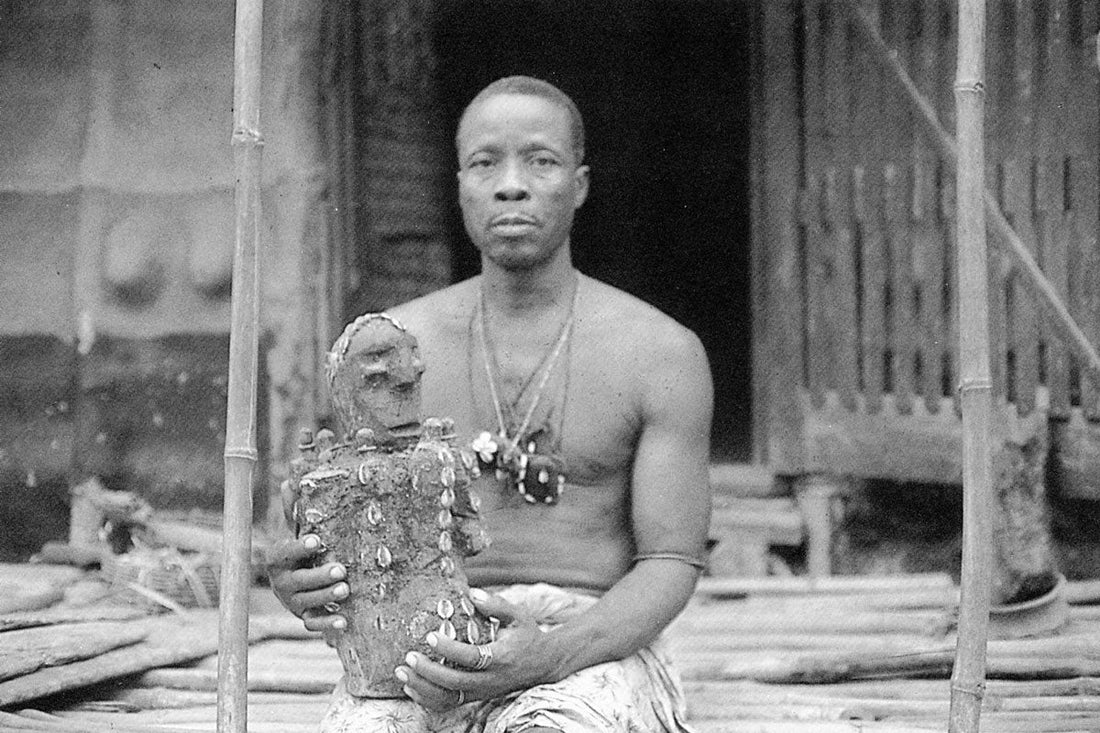
The Fon People of Benin: A History and Culture from the Dahomey Kingdom
Share
The Fon people of Benin are one of West Africa’s most influential ethnic groups, renowned for their rich history, vibrant culture, and distinctive artistic traditions. As the dominant population in the former Dahomey Kingdom (modern-day Benin), the Fon tribe has shaped the region’s political, spiritual, and artistic identity. Among their most significant cultural contributions are their sacred fertility drums, which play a central role in religious ceremonies and communal life. We'll explore the Fon people’s history, cultural practices, and their unique contributions to Benin art and West African art at large.
Historical Background: The Rise of the Fon Kingdom
The Fon people trace their origins to the 17th century when they established the powerful Dahomey Kingdom (c. 1600–1900). This kingdom became one of West Africa’s most formidable states, known for its military prowess, centralized governance, and deep spiritual traditions.
The Dahomey Kingdom emerged under King Houegbadja (c. 1645–1685) and expanded through conquest, particularly toward the southern coastal regions. The Kingdom reached its height in the mid-1800s during the reign of King Ghezo (c. 1818-1859), after defeating the neighboring and larger Yoruba Oyo Empire. Frequent trade (including the transatlantic slave trade) with European powers, particularly Portugal and France, brought great wealth to the Kingdom until it fell under French colonial rule in 1894. Despite colonization, the Fon people preserved their language (Fon, part of the Gbe language family), religious practices, and artistic traditions. Today, the Fon tribe remains a dominant cultural force in Benin, particularly in the southern regions, including the cities of Abomey and Ouidah.

Dahomey Amazons: The Female Warrior Class
The Dahomey Amazons, or Mino (meaning "our mothers"), were an elite all-female military regiment that served as the royal guard of the Dahomey Kingdom. Renowned for their fierce combat skills and unwavering loyalty, these warriors underwent rigorous training, excelling in hand-to-hand combat, marksmanship, and battlefield tactics. Unlike most African armies of the time, the Mino held significant political influence, advising the king and participating in key military decisions. European colonizers and explorers, including the French, documented their shock at encountering such disciplined female fighters. The regiment was eventually disbanded after the Franco-Dahomean Wars (1890–1894), but their legacy endures as a symbol of female empowerment and military prowess in African history.
Fon Religion and Traditions
The Fon people have a deeply spiritual worldview, centered around Vodun (often referred to as Voodoo in the West). Vodun is not merely a religion but a way of life, influencing social structures, festivals, and artistic expression. Key elements of Vodun include the belief in a supreme creator, known as Mawu-Lisa, as well as a pantheon of spirits that govern nature, fertility, and destiny. The priests and priestesses (Vodunsi) served as intermediaries between the human and spirit worlds. Sacred rituals led by the Vodunsi would often involve music, dance, and ceremonial objects–like their fertility drums. These celebrations included notable ones like Zangbeto, a protection against evil spirits, and Gelede, which honored fertility in both the community and harvest.
Fon Art: The Sacred Role of Fertility Drums
Benin art, particularly that of the Fon people, is renowned for its spiritual depth and craftsmanship. Among their most significant artifacts are ceremonial fertility drums, used in Vodun rituals to invoke ancestral blessings and ensure community prosperity.
Characteristics of Fon Fertility Drums
1. Symbolism & Function
- Represent the union of masculine and feminine energies, essential for agricultural and human fertility.
- Played during rituals to summon deities like Dan (the serpent spirit) and Gbadu (goddess of fate).
2. Design & Craftsmanship
- Carved from single pieces of wood, often with intricate geometric patterns.
- Some drums feature figurative carvings of deities or ancestral spirits.
- Covered with animal skins (commonly goat or antelope) for resonance.
3. Ritual Use
- Used in ceremonies for childbirth, harvests, and royal coronations.
- The rhythm of the drums is believed to channel divine energy.

Fon Art in a Wider Context
The Fon people’s artistic traditions extend beyond their fertility drums to include:
- Bronze & Iron Sculptures: Often depicting kings and deities.
- Appliqué Textiles: Used in royal courts to narrate historical events.
- Wooden Statues: Representing Vodun spirits.
These works contribute significantly to West African art, influencing contemporary African artists and remaining highly sought after in global museum collections.
The Legacy of Fon Art Today
Despite historical disruptions, the Fon tribe continues to uphold its cultural heritage. Key developments include:
- Preservation Efforts: Museums like the Musée Historique d’Abomey in Benin and the Quai Branly Museum in France house important Fon artifacts.
- Contemporary Influence: Fon motifs appear in modern African art, fashion, and music.
- Global Recognition: UNESCO has recognized Gelede as an intangible cultural heritage.
The Enduring Power of Fon Culture
The Fon people of Benin have maintained a vibrant cultural identity through centuries of change. Their art, especially the sacred fertility drums, serves as a bridge between the physical and spiritual worlds, embodying their deep connection to ancestry and the divine. As scholars and museums continue to study Benin art, the Fon tribe’s contributions to West African art remain indispensable to understanding Africa’s rich artistic legacy.

